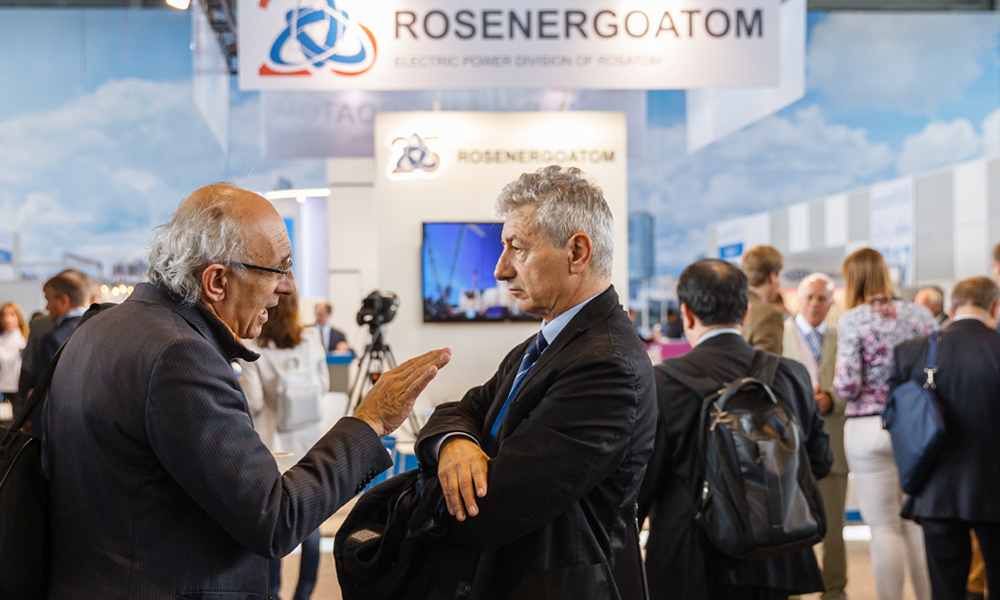
Fast Reactors Are the Future
back to contentsRussia has long been in the forefront of fast neutron technologies. With BN-600 and BN-800, it is the world’s only country operating commercial fast neutron reactors. A more powerful BN-1200 reactor has been designed, and experts are now looking into economic aspects of the project.
According to Sergei Shepelev, BN-1200 Chief Designer at OKBM Afrikantov, extensive research allowed for many improvements in technical and economic parameters of the new reactor without compromising on nuclear safety. “We have come to the conclusion that BN-1200 should demonstrate somewhat better economic performance than light-water reactors, particularly VVER-TOI. This was achieved by optimizing the intermediate heat exchanger (IHX). Unlike two-circuit VVER reactors, sodium-cooled reactors have an additional, intermediate heat exchange loop introduced to separate water and sodium, which reacts with water. The IHX optimization was one of many solutions to make fast reactors cheaper in construction. Another important thing is that low pressure in sodium-cooled reactors allows for an integral reactor design.”
The BN-1200 design concept relies on reference solutions used in BN-600 and BN-800 equipment, systems and layout, according to Sergei Shepelev. “This is our advantage over foreign nuclear projects, which have no reference. On the other hand, the new reactor uses technology that is not present in either BN-600 or BN-800, but significantly improves its economic performance and safety.”
Mr. Shepelev said that BN-1200 would generate its first electricity in 2027 if the decision to construct the reactor at Unit 5 of the Beloyarsk Nuclear Power Plant was made this year. The BN-1200 design allows using both MOX and nitride fuel. Mr. Shepelev also noted that Russia had an understanding of how VVERs and fast reactors could be combined. Fast breeder reactors could be used as a new source of nuclear fuel and minimize radioactive waste. “Reactors of the two types are allies rather than rivals as they complement each other. Their combination ensures efficient fuel utilization and reduces environmental impacts due to spent fuel recycling,” Mr. Shepelev says.
Nikolai Ponomaryov-Stepnoi, Professor and Academician of the Russian Academy of Sciences, stressed advantages of the combined approach. “It was many years ago when we started pointing out that nuclear power generation must have two components – thermal reactors, which can be constructed almost everywhere in the world, and fast reactors, which can provide thermal reactors with fuel in case of uranium shortage. You know that the amount of spent nuclear fuel from thermal reactor is growing every year, and this problem has to be solved. The combination of two reactor types allows for spent nuclear fuel to be used in fast reactors as it contains much plutonium. If we re-process spent fuel and extract plutonium, we can use it in fast reactors, which in their turn produce purer plutonium for thermal spectrum nuclear reactors. This makes the combination of reactors increasingly more attractive”, he said.
We have to think ahead
According to Sylvester Pivet, Director of the Innovation and Industry Support Department, French Atomic Energy and Alternative Energies Commission, we all have to think ahead. “Public acceptance of nuclear power is dependent on effective resource and waste management. With this in mind, a closed nuclear fuel cycle might be an optimal solution to the challenges we face. It is very important to discuss these challenges now as every issue related to nuclear generation needs much time to be settled. Each uranium-based thermal reactor produces plutonium and minor actinides. Speaking about waste, plutonium poses a major threat if not properly re-processed. Reprocessing is the best option, at least we think so in France, and fast reactors are an optimal solution for this purpose. Plutonium produced in French nuclear reactors is re-processed and then placed into storage until final disposal, maybe in fast neutron reactors. As all aspects of the nuclear industry are interrelated, I think there is no point in setting thermal reactors against fast breeders. We should have a broader, more consistent approach.”
According to him, fast reactor programs must be drafted and piloted in developed nuclear countries like Russia, China, Japan and South Korea. “There is no doubt that such programs are crucial for France and the UK, which renews its nuclear capacity, and we seek for a broader cooperation with it. France and Russia have many joint projects on different levels. I think the most important thing for us is to establish true and effective partnerships, even if they are limited in terms of scope. With its extensive expertise, long nuclear track record and professional staff, Russia is very attractive in terms of technical cooperation, especially in areas of common interest,” he stressed.
IAEA vision
Stefano Monti, Head of the IAEA Nuclear Power Technology Development Section, believes that fast reactors will play a key role in the future of nuclear power. “At present, nuclear power generation accounts for 30% of the low-carbon market (power generation technologies with no CO2 emissions). Nuclear power is a valuable asset for the economies willing to cut their CO2 emissions. Apart from existing nuclear power plants, a large contribution to this goal can be made by advanced technologies, and fast reactors are clearly one of them. As you know, there are just a few fast reactors in the world (BN-600 and BN-800 in Russia and CEFR in China). Honestly speaking, their contribution to the low carbon economy is yet very small, but their potential is immense. We expect that fast reactors will play a more important role in the second half of the 21 century. It is quite possible that there will be many of them, and they will contribute much to the development of low-carbon economy.”




